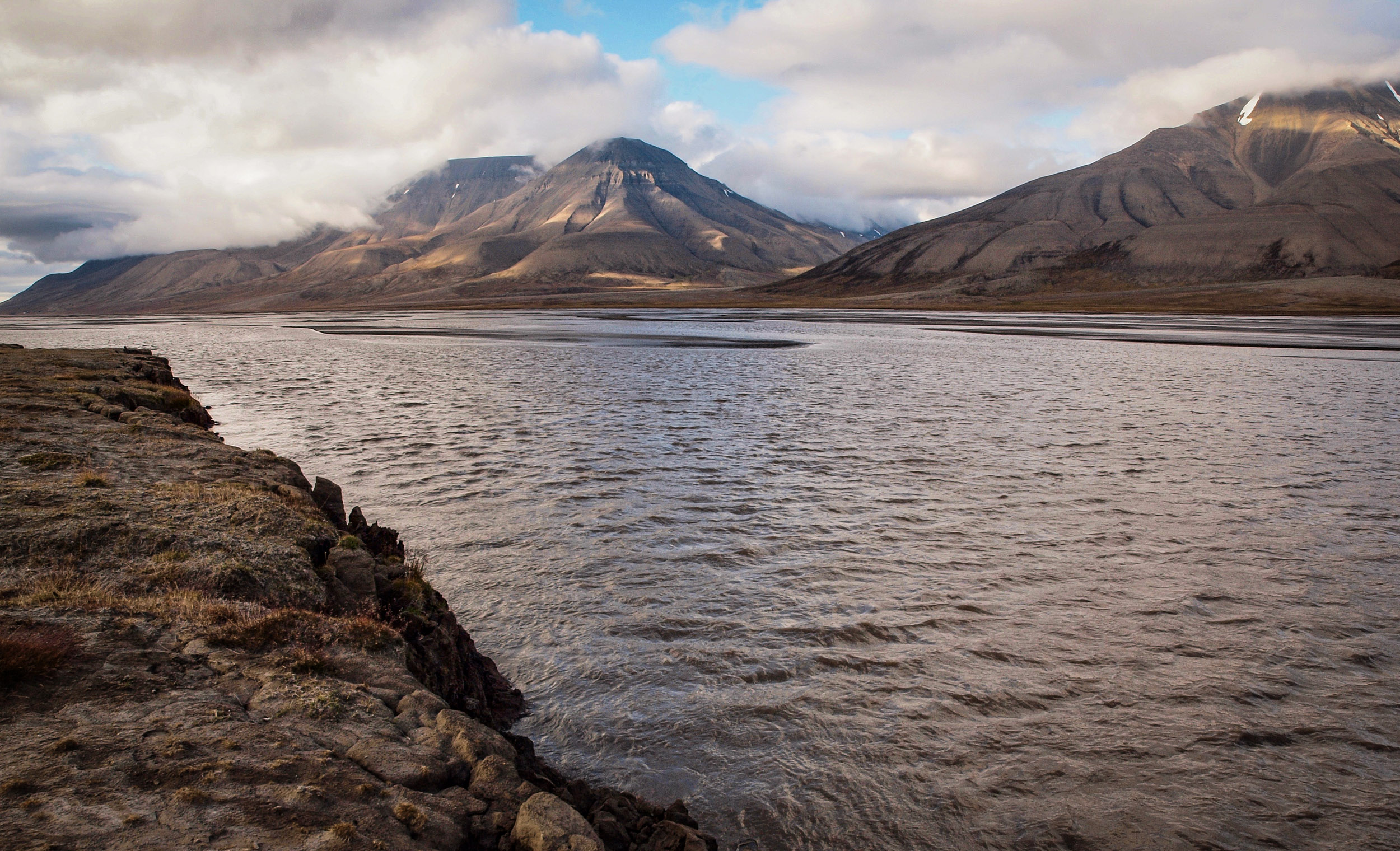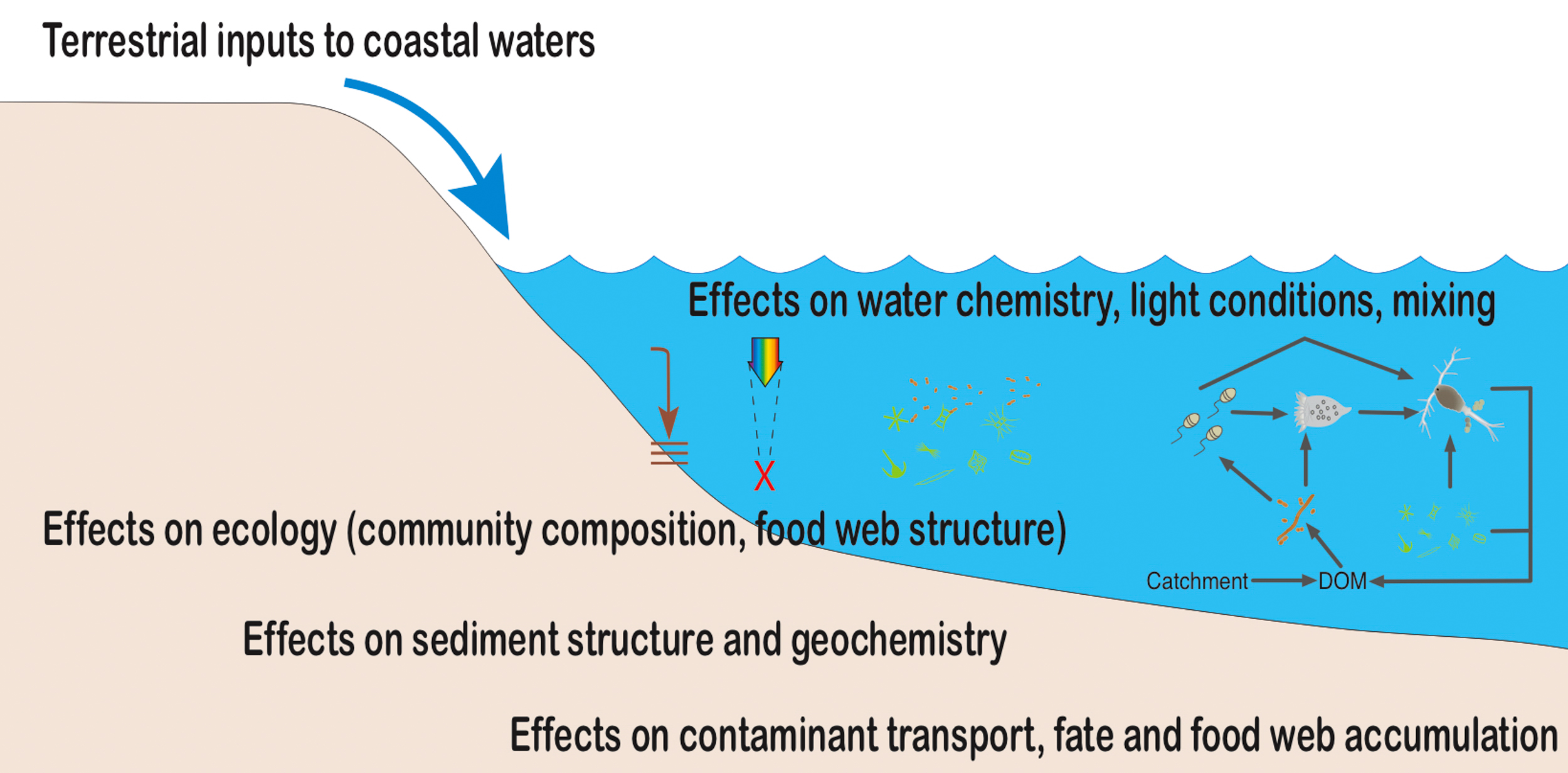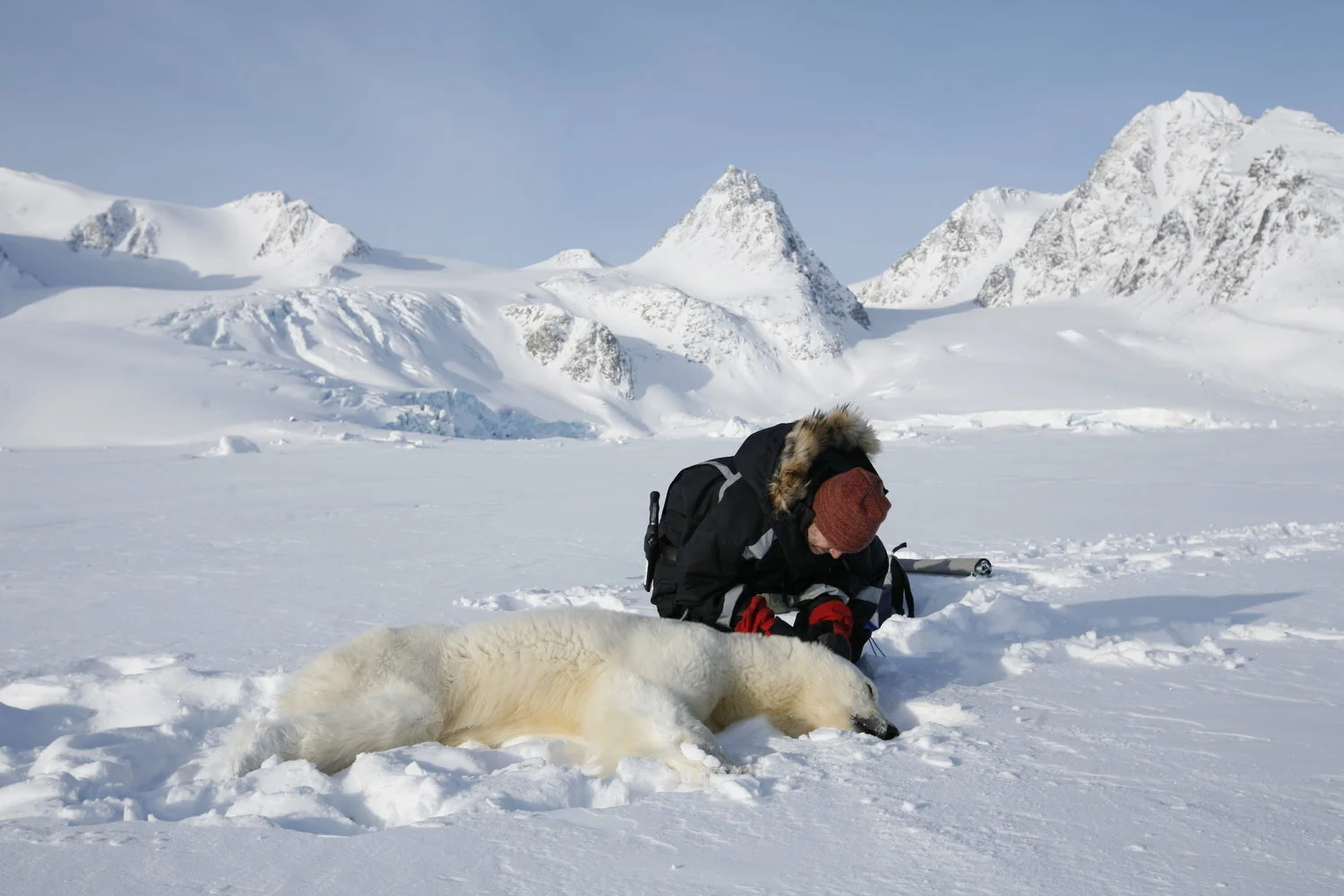Where River Meets Fjord
SCIENCE
Writer: Amanda Poste//Norwegian Institute for Water Research
Photographs: Uta Brandt, Guttorm Christensen, Siri Beate Arntzen
October 2018
The land-ocean interface, where land meets sea, is a dynamic environment that supports productive coastal ecosystems. These, in turn, are a key source of marine resources for northern communities. But northern coastal ecosystems are in transition. Multiple stressors, often inter-related, are exerting pressure and driving long-term environmental change in coastal environments. Stressors such as climate change (e.g. alterations in precipitation and runoff patterns, shifts in catchment vegetation) and land-use changes can lead to changes in the movement of water, sediments, nutrients, organic matter and contaminants from land to sea. These changes may have strong effects on coastal water chemistry, ecology and cycling of contaminants such as mercury.
However, very little is known about the downstream effects of terrestrial inputs on coastal ecosystems, and without comprehensive baseline knowledge on the nature and magnitude of these inputs, and their biogeochemical and ecological consequences, it is difficult to assess how future increases in these inputs might affect northern coastal ecosystems.
River input effects on sub-arctic fjords
Our recent work has focused on exploring how riverine inputs affect the biogeochemistry, ecology, and mercury contamination of northern fjord ecosystems. Through detailed fieldwork, sampling on six occasions from August 2015 to November 2016, we have characterized physicochemical conditions, pelagic lower food web ecology and mercury dynamics along a freshwater to marine gradient in a sub-Arctic Norwegian river-fjord system (Målselv–Målselvfjord, in Troms).
Effects on physicochemical conditions
Physical and chemical conditions in the river–fjord system were primarily driven by mixing of the fresh and marine water masses, and were strongly influenced by recent rainfall and river discharge. The influence of freshwater inputs from the river extended well beyond the outer fjord during periods of high river flow, while during periods of low river flow, only a thin layer of fresh or brackish water was present in the inner fjord. In all seasons, the river was a source of terrestrial organic matter, silicate and mercury to the fjord ecosystem.
Collecting a zooplankton sample in Målselvfjord. JONAA©Guttorm Christensen
Fjord zooplankton rely on food from land
Stable isotopes of carbon are often used to determine where organisms get their nourishment, as different primary carbon sources often have different isotopic composition. The strong contrast between the stable carbon isotopic values of riverine and marine-derived organic matter allowed us to use a two-source mixing model to assess the relative importance of terrestrial (riverine) versus marine energy sources for fjord zooplankton.
Nearshore zooplankton appeared to rely heavily on terrestrial inputs as a food source, especially when river flow had been high in the weeks and months prior to sampling. The importance of terrestrial energy sources tended to decrease with increasing distance from the river outflow. This suggests that riverine inputs can represent an important source of external energy to coastal plankton communities.
THE PROJECTS
The work in Målselv–Målselvfjord was funded by the Fram Centre’s Hazardous Substances flagship programme and the Norwegian Institute for Water Research’s strategic institute programme for land-ocean interactions.
The TerrACE project (“Where land meets sea: Effects of terrestrial inputs on Arctic coastal ecosystems”) is funded by the Research Council of Norway
These projects involve a large interdisciplinary team of researchers from Norwegian and international institutes.
THE COLLABORATORS
Maeve McGovern, Anders Ruus, Hans Fredrik Veiteberg Braaten, Ian Allan, Øyvind Kaste, Pernilla Carlsson: Norwegian Institute for Water Research
Guttorm Christensen, Paul Renaud, Anita Evenset, Eva Leu: Akvaplan-niva
Katrine Borgå, Sabrina Schultze: University of Oslo
Lena Seuthe: UiT The Arctic University of Norway
Sebastiaan Koppelle: University of Amsterdam
Øystein Varpe, Janne Søreide: The University Centre in Svalbard
Kjersti Tønnessen Busch, Siri Beate Arntzen: SALT (salt.nu)
Michael Arts: Ryerson University, Canada
Ken Dunton: University of Texas Marine Sciences Institute, USA
Riverine input increases mercury levels
The river was an important source of total mercury to the fjord, with some evidence of mercury methylation in the fjord. Both total and methyl mercury concentrations in zooplankton decreased from the inner to the outer fjord. Bioaccumulation factors (the ratio between concentrations in zooplankton and concentrations in water) were higher in the inner fjord, suggesting more efficient food web accumulation of mercury at sites with higher freshwater influence.
These results highlight the potentially strong impact of riverine input on coastal biogeochemistry, ecology and mercury contamination. A paired study in a southern Norwegian river-fjord system (Storelva–Sandnesfjord) gave similar results. We are now doing follow-up studies in both river–fjord systems focusing on how terrestrial inputs affect sediment geochemistry, benthic ecology, and contamination of benthic organisms.
Students from Bardufoss ungdomskole in Norway learning to filter river water samples from Målselv. JONAA©Siri Beate Arntzen
Next steps: moving northward
We are now expanding this work to Svalbard, where in addition to changes in precipitation and runoff patterns, thawing permafrost and melting glaciers can be expected to alter the mobilisation and transport of water, sediments and associated compounds from land to sea. The highly interdisciplinary TerrACE project (see fact box) will provide detailed information on: the nature and magnitude of terrestrial inputs to Svalbard’s coastal waters; physicochemical conditions across gradients in the influence of terrestrial inputs; and effects of terrestrial inputs on the flow of energy and contaminants (including mercury and PCBs) into and through Svalbard’s coastal food webs.
Through a combination of field-based and modelling approaches our work in the TerrACE project, as well as in our previous work in mainland Norwegian river–fjord systems, aims to characterise the complex interplay between terrestrial inputs to coastal waters and coastal biogeochemistry, ecology and pollution, and to provide critical baseline information for understanding how future changes in these inputs may affect northern fjord ecosystems.
Aquatic ecologist Amanda Poste at work. JONAA©Guttorm Christensen
More Science:
This article is written by Amanda Poste, an aquatic ecologist/limnologist who is driven by a desire to understand human impacts on the aquatic environment. Her research focuses on a wide range of topics, including: land-ocean interactions, environmental contaminants (fate, transport, biomagnification), food web ecology, eutrophication and phytoplankton ecology, paleolimnology, as well as catchment biogeochemistry. This article is published in the science collaboration between JONAA and the Fram Center in Tromsø, Norway.
Svalbard, where the research will soon be expanded to include changes in precipitation and runoff patterns, thawing permafrost and melting glaciers can be expected to alter the mobilisation and transport of water, sediments and associated compounds from land to sea. JONAA@Justin Levesque














